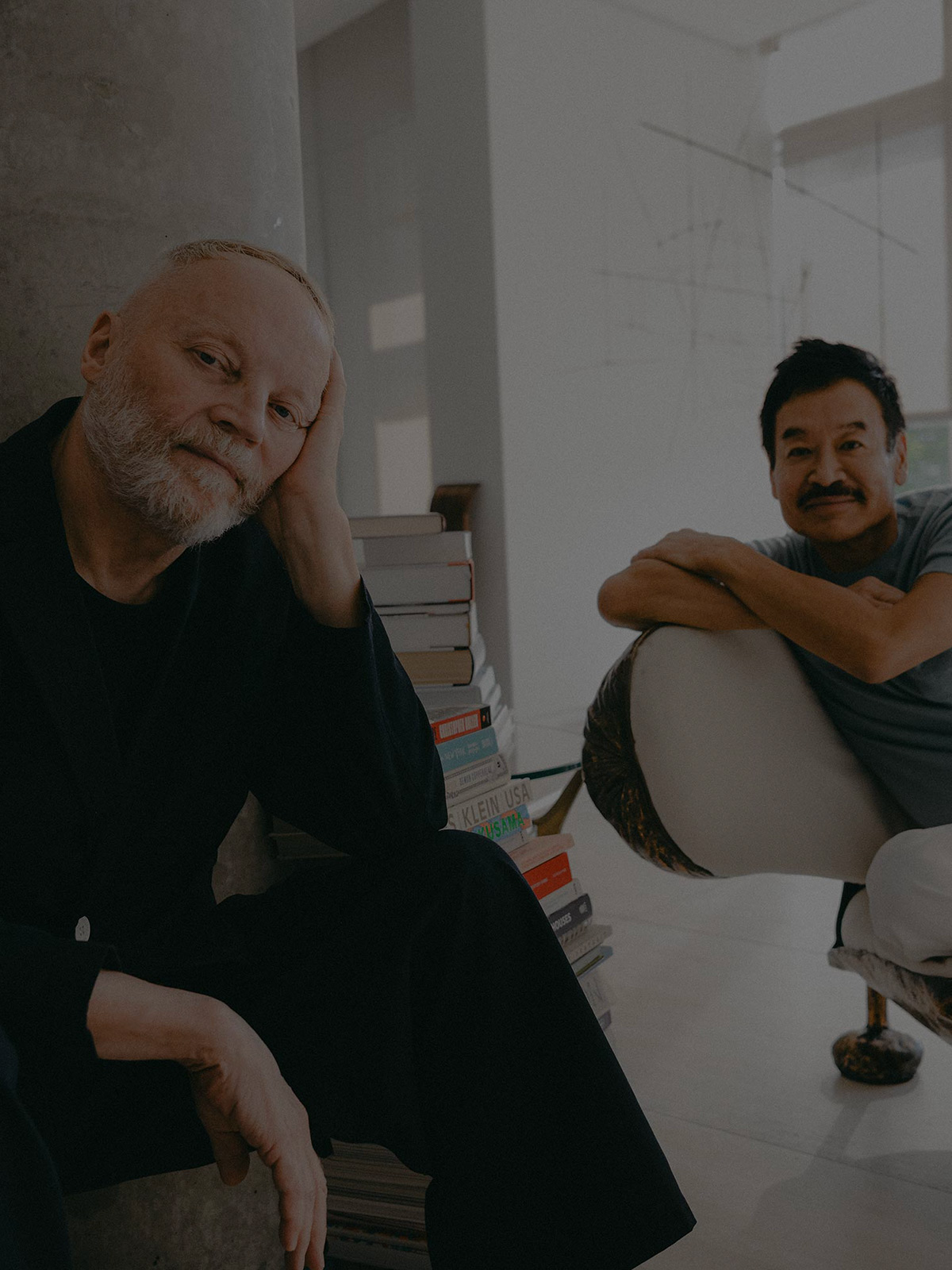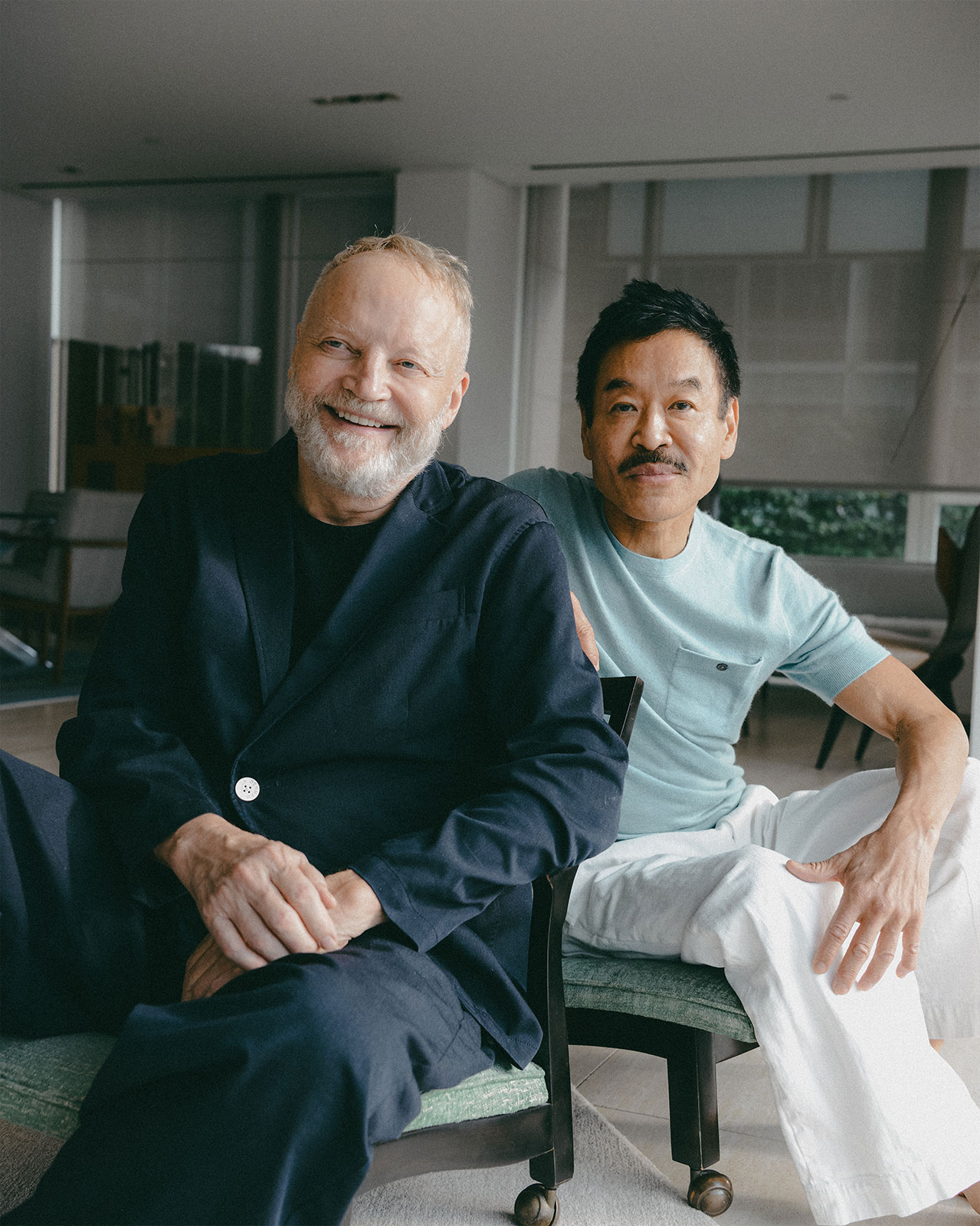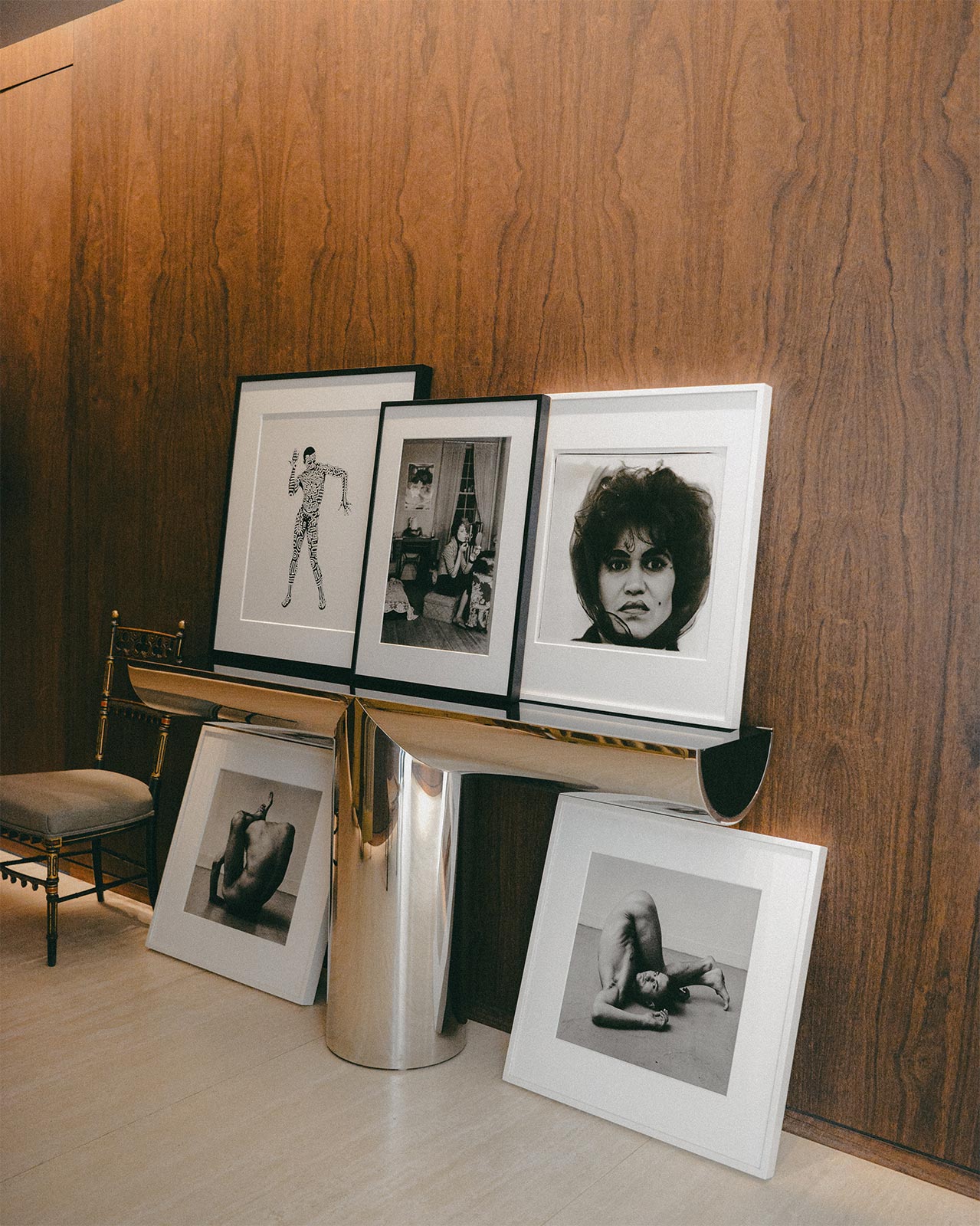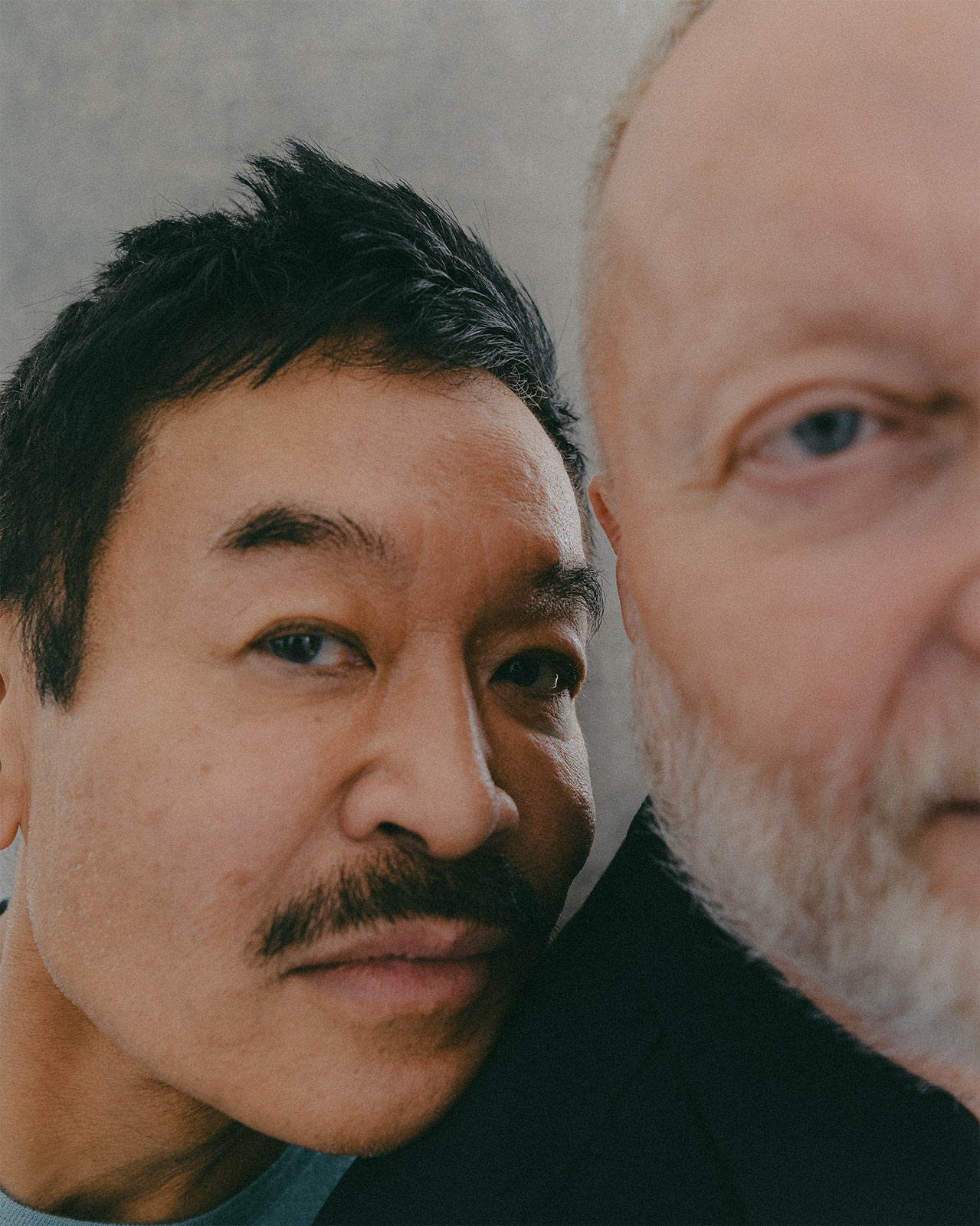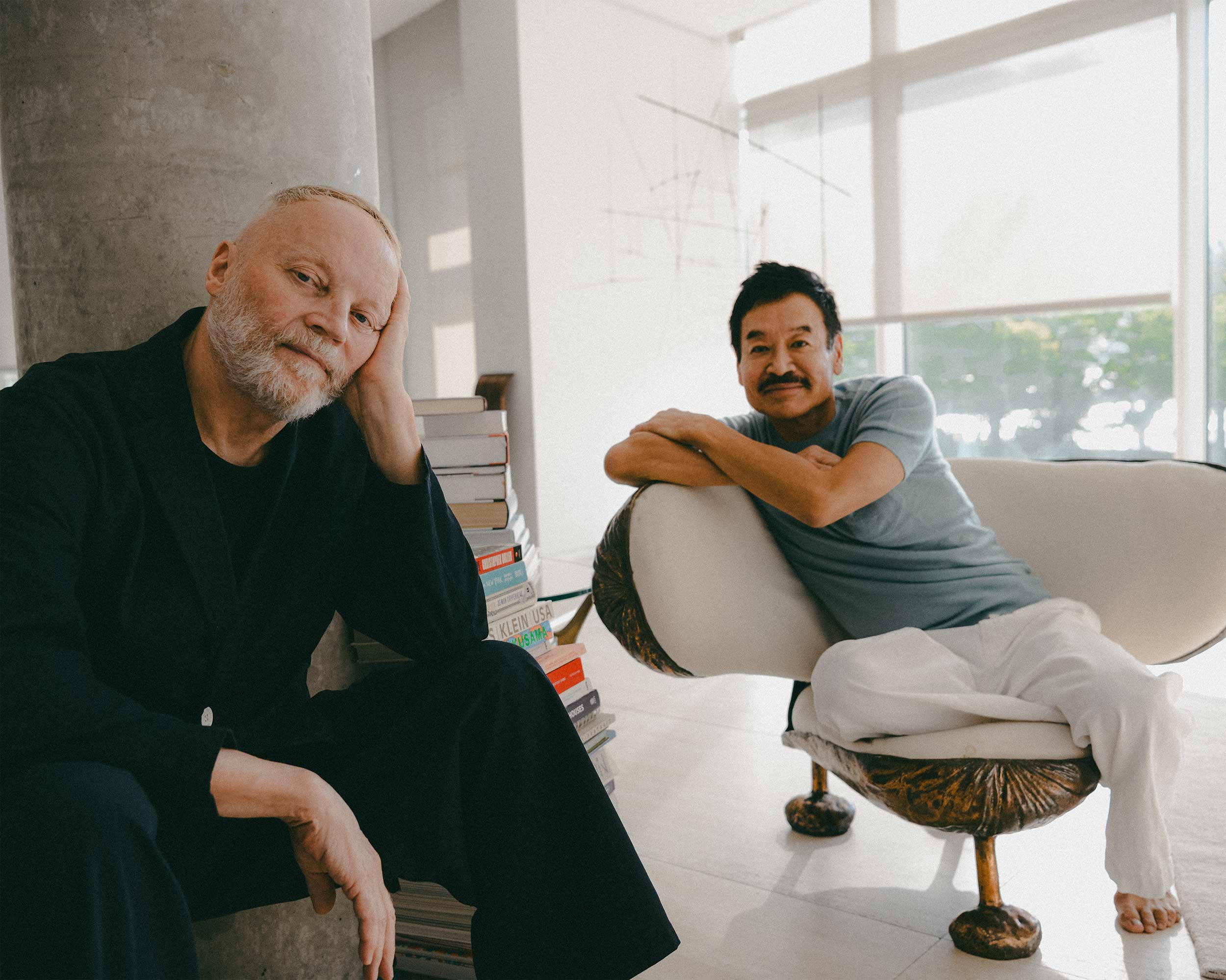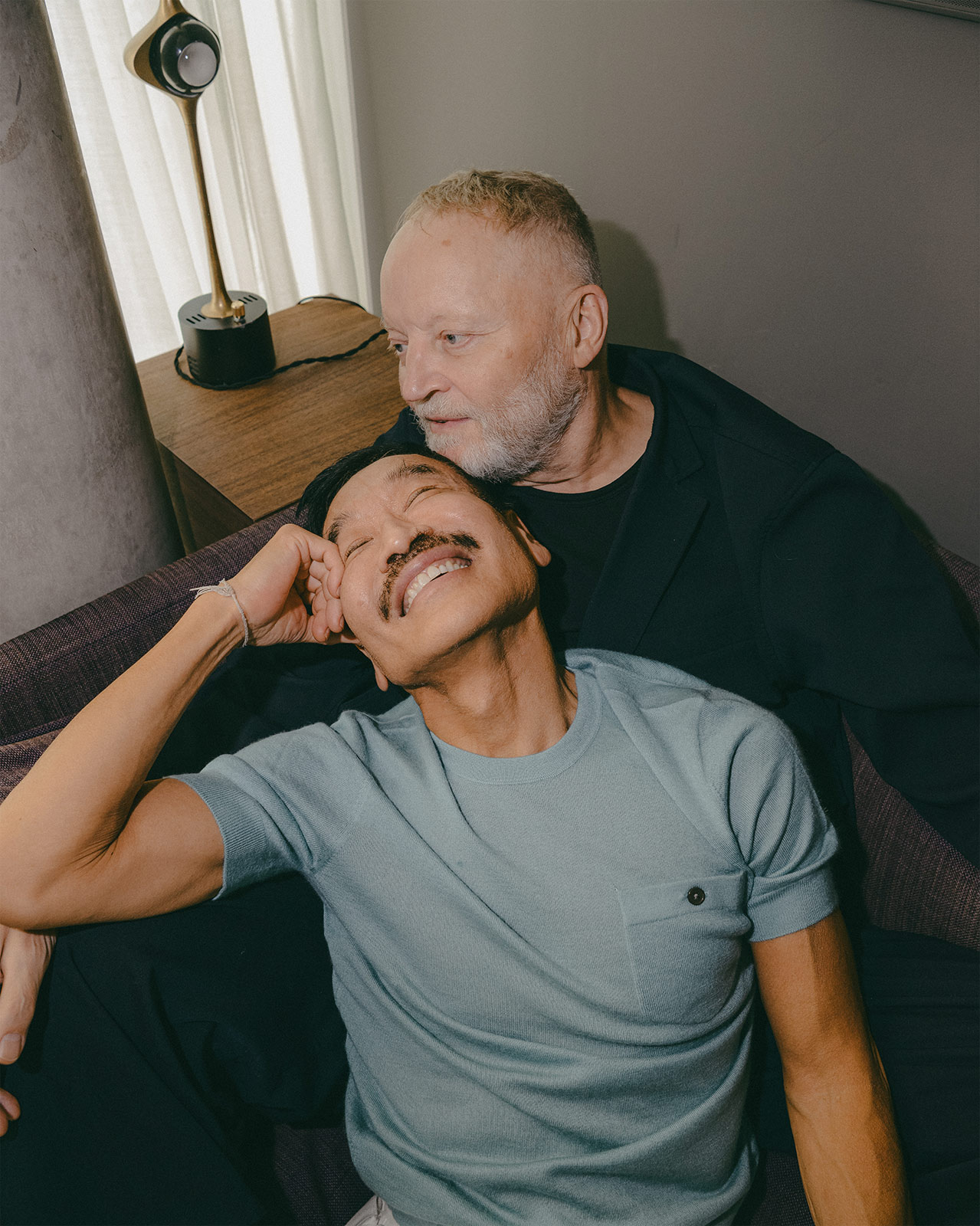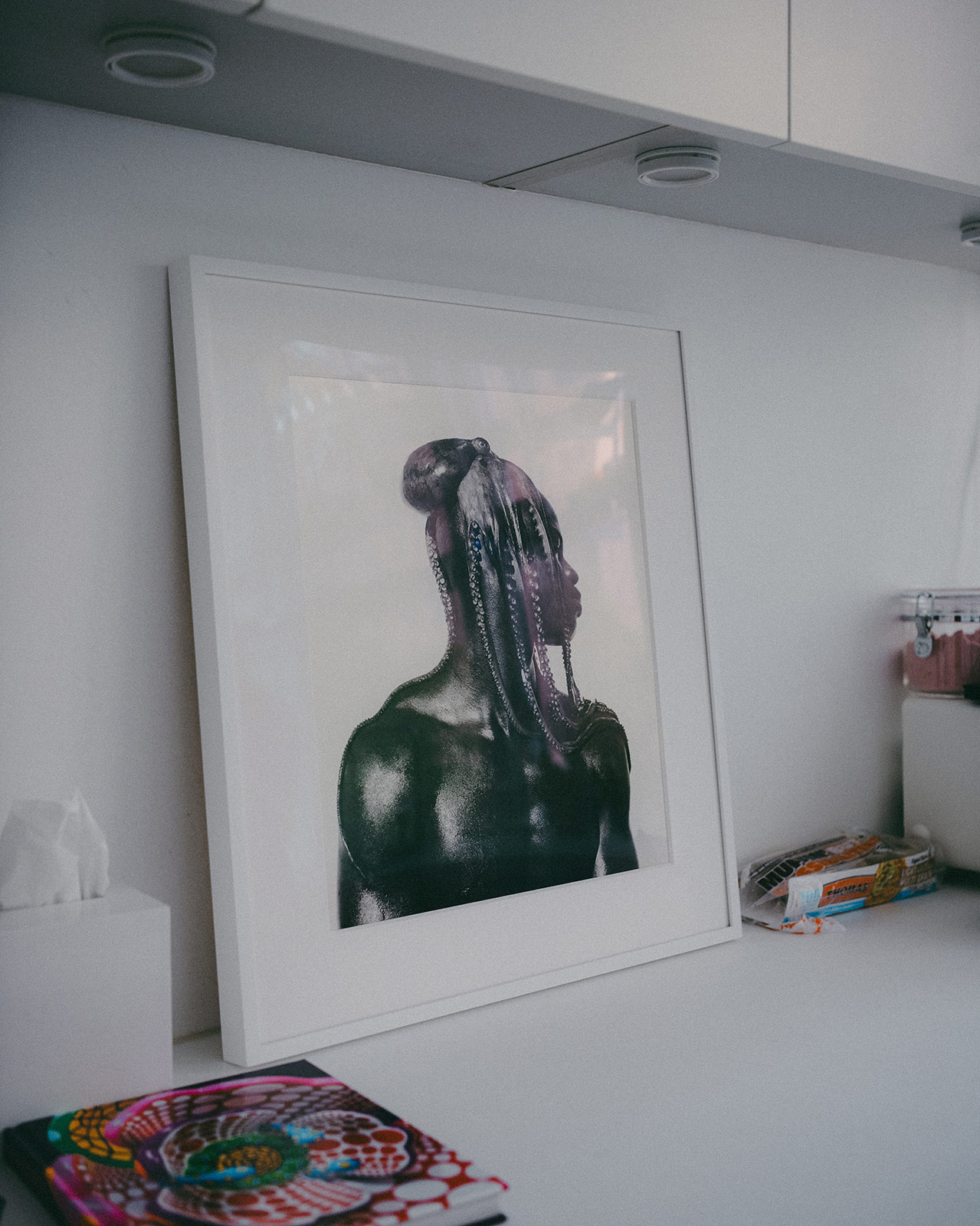Document sits down with the duo behind the boundary-breaking interiors firm to trace how their personal and professional histories inform their forward-looking designs
George Yabu and Glenn Pushelberg, the founding duo of design studio Yabu Pushelberg, have shaped some of the world’s most iconic spaces. Established in 1980, their firm is known for its diverse projects that span hospitality, retail, and residential interiors. Their big break began in Toronto: in 1985, Yabu Pushelberg designed a retail space for Club Monaco, and by 1998, the duo won a James Beard Award for their work on the Monsoon Restaurant and Lounge. This award raised the firm’s stock in the hospitality industry, where they simultaneously completed their first and second hotel projects: The W in New York and the Four Seasons Hotel Marunouchi in Tokyo. From there, the pair has built an international reputation with its forward-thinking aesthetics, applying their concepts to retail spaces Bergdorf Goodman’s New York flagship, hotels like Ian Schrager’s EDITION hotels in London and Miami Beach, and restaurants like Jean Georges’s The Fulton. “All of these markers that pushed us forward were not orchestrated, they were not premeditated,” says Yabu of his firm’s successful beginnings. “They were situations that were a lot of luck and timing.”
Born to farmers in rural Canada, Pushelberg attended design school because there were no examinations required. Yabu’s childhood, marked by his family’s experience of discrimination as Japanese Canadians, fostered a mindset that would later shape his creative perspective and push him into the world of design. The pair would later find each other within the same program at the renowned School for Interior Design at what’s today called the Toronto Metropolitan University.
Blending instinct, creativity, and a refusal to adhere to conventional paths, Yabu Pushelberg’s pioneering work helped elevate the field of interior design and influenced a generation of architects, designers, and aesthetes. Today, they channel their professional success into giving back, particularly to LGBTQ+ and minority communities. Their ongoing work is a testament to their passion for design and dedication to making a lasting impact.
For Document, the pair sit down with Editor-in-Chief Nick Vogelson to share the equally funny and tender parts of their origin story in design, along with what drives their vision for their firm’s future.
Nick Vogelson: I would love to start with your origin story, where you come from, and how you ended up in the design world. But I also want to touch on Studio 54 and your experience in New York in the ’70s.
Glenn Pushelberg: My parents came from not much, and they both were involved in craft. They started as farmers, and whatever. So, why did I go to design school? I was accepted to three schools: fine arts, a hotel and food administration [program], and a program called interior design in Toronto which had no examination. I didn’t take hotel administration because I’d have to live at home and I wanted to get out of a small town, and I was too practical to be an artist. So I took the third one because there were no examinations.
George Yabu: And it was a very nascent profession at the time. Parallel, except I grew up in a household on the Japanese reserve [based on] Buddhist teachings. My parents are very proud, despite what the message was [in Canada] at the time. We had a difficult childhood because of what happened at that moment. What I figured out way too late was this discrimination and racism that happened, where they took citizenship away and everyone’s belongings, and they auctioned off [my father’s] boat building and the house that he built for my mother—all gone. You could only take what you could carry in your hands and get on the train, and they dumped you off the middle of British Columbia. Despite that, my father said you know, ‘The past is the past, you gotta look forward.’ What he was driving at in being a total tyrant was that he was trying to toughen us up, because it can happen again at any time.
And it happened again in 1970, after the war. There was Pierre La Porte, the French cabinet minister that was murdered by the separatists in Montreal, and the government used that same War Measures Act that they used against the Japanese. I went to design because I thought, ‘I can’t be as good as my sisters,’ and so I thought ‘I can’t go into academia,’ so I applied in different places, and I ended up in the world of creativity. I also didn’t want to write term papers, but I ended up being an okay writer, right?
Glenn: You’re a fantastic writer.
George: It’s a strange parallel with Glenn in that way, though.
Glenn: I think our ambition comes from our families, and having to prove ourselves based on what our parents had to go through.
Nick: It’s interesting to hear how your backgrounds informed a lot of your early decisions. I also wanted to ask, did getting involved in interior design in the ’70s feel prescient, or was it sort of an unknown?
Glenn: Totally unknown. I mean, we were in Toronto and at the time there were only two or three really decent firms doing work.
George: A lot of people asked us, ‘What is interior design?’ in the ’70s. In fact, our school at Ryerson—the School of Interior Design—came from an upholstery program in the late ’50s. That’s how it was tied to Susie Homemaker in the mid-century, all that stuff. Interior design was fluff and it wasn’t a real profession.
We sort of made up the industry and what it can do for our clients. I mean, we’re not talking about a cure for cancer, but there is some practical purpose and value in interiors.
Nick: You’re talking about this really important idea that you helped influence and educate a generation of interior designers. How conscious were you both that that was on the horizon, or did it just happen naturally?
Glenn: I was happenstance. Today we’re excited by that, but our focus is mainly to give and teach people. We’re 70 now, so it’s like ‘What’s next?’ We have a comfortable life. Three years ago, we opened the transitional home for gay, lesbian, transgender and Aboriginal teenagers. We just had a meeting today with the AGO (Art Gallery of Ontario), which is the MoMA of Canada, and we’ve been donating gay, lesbian, transgender photography, and our motive behind that is to show younger gay people their history from the ’70s and ’80s.
Nick: What was your experience like in the ’70s and ’80s in New York nightlife? It feels like that informed a lot of your creativity whether direct or indirect.
Glenn: Today, everything is segmented. I think in the ’70s, what informed us was the coming together of high and low, rich and poor society, high and low society. Thwart was a frisson that made it exciting.
George: Also the absence of technology allowed you to express yourself freely, which is not the case today.
Nick: That’s a point that definitely reverberated through culture. The idea that the way you express yourself is much more guarded now, or performative in a way that maybe it wasn’t then.
George: In nightlife then, there’s the intensity of euphoria that you got past the velvet rope. In that room past that, you got the feeling of ‘We all belong together.’ That euphoric energy kept building up to a point where it was like, there, I realized I never felt psychologically free from everything than in that one space. It was so good. Would I do that today? I’m not sure, which is kind of sad.
Nick: So much of your practice interweaves the personal, the experiential, the professional, you know the world around you. I wanted to ask you about any mentors who have helped shape your practice and your vision in the early stage of your career.
Glenn: At university we had a teacher, Irene. She went into interiors in the ’60s, and she did beautiful work. She married her university husband who was gay and left him, but then he was murdered by a trick one night, she cleaned up the mess, she was super interesting…
Nick: What a side-story!
Glenn: She would say, ‘It’s four o’clock, let’s go for a drink, let’s go draw in the park.’ We’d go to a bar next to the park, and then go for another drink. and then we’d end up at her house. She’d get a pencil out and draw a ouija board and we’d play. She taught us how to live fearlessly, not by convention. That’s our mission, from what she gave us.
George: She said once, ‘Let’s go to this bar,’ like this is enough sketching in the greenhouse, it’s drink time. And she took me to my first gay bar.
Nick: This was in Toronto?
George: Yeah, and she took us because her husband was gay, so she knew the joints. It was fun. It felt like you’re an outlaw.
“It expanded our life. It was about working from your instincts and not working from your fear of things. Having a great practice like we do is never about starting with making money. It starts with curiosity and trial.”
Nick: What does living fearlessly mean for you in practice?
Glenn: The same question is calculating risk, ability to move forward, to take risks, or to try new things, is living fearlessly. I remember when we almost went bankrupt in 1990, we decided to go to Harvard summer school of business for architects and designers, and one of the key things they said is to have a successful practice, you have to be focused on one like: hospital design, this or that. We never did that. We lived outside of those conventions. We opened a studio in New York but we were born in Toronto. We didn’t make money for eight years here, but we had a great time. It expanded our life. It was about working from your instincts and not working from your fear of things. Having a great practice like we do is never about starting with making money. It starts with curiosity and trial.
Nick: What were some of the early milestones for you? I’m sure there have been many along your career, and there are many more to come, but I’m curious when things became real for you.
George: All of these markers that pushed us forward were not orchestrated, they were not premeditated; they were situations that were a lot of luck and timing. Club Monaco, 1985. Friends of ours said ‘Oh I have these two guys who don’t quite have all their shit together, but give them a shot and see what they can do.’ So we came up with the color marker concept in 1985 based on MUJI—no name, basic packaging—and we sold shirts and chinos that looked like stuff that would belong at a grocery store. So that was the concept. And that [project] was a pivoting point.
Glenn: We started doing these big retail stores, and then started working for Barney’s.
George: We were lucky that people had faith in us.
Glenn: We’re so excited about everything. And I attribute to that the fact that we’ve made great milestones over our existence. Maybe we wouldn’t be where we are if we’re so focused on being balanced.
Nick: When you’re dealing with global clients, you’re working with different cultures, you’re dealing with different norms, you’re also dealing with different ideas of space and civic space and common space and all of these fundamental questions come up. How do you approach cultural differences from the perspective of space?
Glenn: I think the idea of applying research, which can be qualitative or quantitative research, what the methods of building things are there, what the materials are there, what the coding of aesthetics mean in different cultures… I think it’s also even in the simple things, how you communicate with people easiest to get what you need for yourself and them.
George: I think we’re very desirable—hopefully— because we didn’t say, working in India for example, ‘This is the way we do it.’ We’re curious, and we’d ask ‘How do you do it?’ and go from there. Being interested in the local practice.
Nick: I also wanted to touch on what makes you get up in the morning every day. Part of that is, as you said, giving back, and part of that is the artists that you want to support. At a gut level, what is that for you?
Glenn: On an emotional level, making sure to give back to minorities—victims of war, sex crimes, racism—is super important to us. We’re curious about designing buildings, aviation, starting in Saudi Arabia. We’re also interested in doing museums and galleries, finding new technologies that are interesting to us.
George: I think that’s what’s powered us to be who we are today, because we focused on that up, on knowing. We tried to live knowing that what goes up must come down. Remaining curious is central to all of that.


